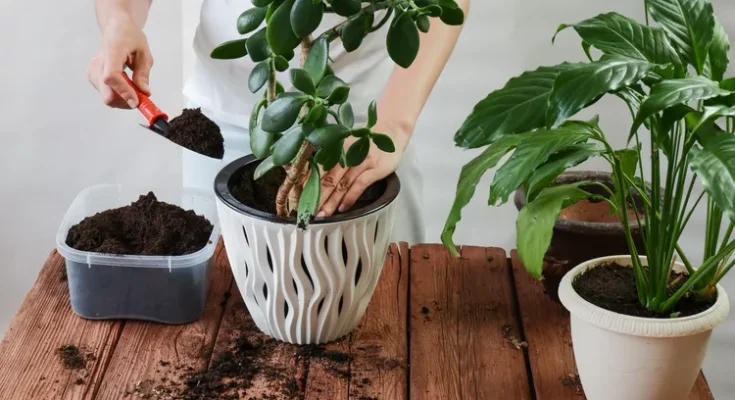Whether your Monstera is creeping out of its container or your pothos is looking sad and spindly, it’s probably time to repot! All you need is some new potting mix; a hand trowel; and a new pot. If you don’t want to end up with dirt under your nails, wear a pair of nitrile garden gloves, which offer plenty of dexterity while still protecting your hands.
Here’s what else you need to know about how to repot your favorite plants:
:max_bytes(150000):strip_icc():format(webp)/GettyImages-1320011500-571c672e70144b8ca0cc29b137988938.jpg)
How To Know When To Repot a Plant
Most plants need repotted every few years, though there are many ways to tell if it’s time to repot: The roots are pushing out the top or bottom of the pot; the lower leaves are turning yellow; the plant is top-heavy and falling over; or the potting mix is drying out quickly. Lackluster growth may be another sign your plant needs a new home.
Ideally, you should repot when your plant is actively growing. Like your garden plants, that’s generally spring to late summer. But if it seems like your plant needs help now, don’t wait. It’s fine to repot anytime, if necessary.
Choosing a New Pot
When you’re selecting a new pot, choose one slightly larger than the last. Maybe you think you should put your plant in a much larger planter so it has room to grow. But that creates a new problem: The plant won’t be able to absorb all the water in a container that’s too big for it, so it may drown. Typically, you should go up about 2 inches in pot size, or a maximum of 4 inches for larger floor plants.
Does the Pot Need Drainage Pebbles?
Nope! This old-school recommendation was that if your pot didn’t have a hole, the addition of pot shards, pebbles, packing peanuts, or sand in the bottom would suffice. This idea has been circulating for decades, but it it’s just plain wrong.
The reason? You want water to percolate through the soil, with the excess draining out. Research has found that water doesn’t move easily through finely-textured materials (potting soil) to coarsely-textured materials (pebbles), so you’re just setting your plant up for failure. If water remains in the bottom of the container, the roots will rot. And there’s usually no coming back from root rot.
The easy fix is to make sure your planting container has a drainage hole. You can drill a hole in many materials. If you use a decorative pot with no hole, slip a smaller pot with drainage holes inside it. Then dump out any excess water from the decorative pot after watering; again, houseplants don’t like wet feet!
If you’re worried about water seeping out of your pot and damaging your furniture, make sure there’s a saucer beneath the container. Use a plant pot coaster, which absorbs excess water, and adds an extra layer of protection for spills.
What You’ll Need
- A new pot (slightly larger)
- Trowel
- Potting Soil
- Water
- Gloves (optional)
How To Repot a Plant
- If the surface is bone-dry, lightly water the plant first to help wiggle it out of the pot. Then turn the pot on its side, holding the foliage near its base in one hand and sliding the pot off the root ball with the other. If it’s stuck, use your trowel to loosen up around the inside edges of the pot. It’s also okay to trim off any roots that are poking out the bottom and keeping it wedged in place.
- Next, examine the root ball. If roots are circling around the plant, unwind and trim a few and loosen the rest up by rubbing your hand over the root ball. This stimulates the plant to send out new roots. If any roots seem mushy or smelly, trim them off; this is a sign you’re probably overwatering, so cut back and don’t keep the soil sopping wet.
- Next, remove some of the old soil, especially if there’s a crusty white or grey buildup of mineral and fertilizer salt. Place the plant in the new pot with fresh potting soil, at the same level it was in the old container.
- Fill in, tamp down lightly with your palm, and water. You don’t need to add fertilizer right away because most potting soils contain enough nutrients for a few months.



